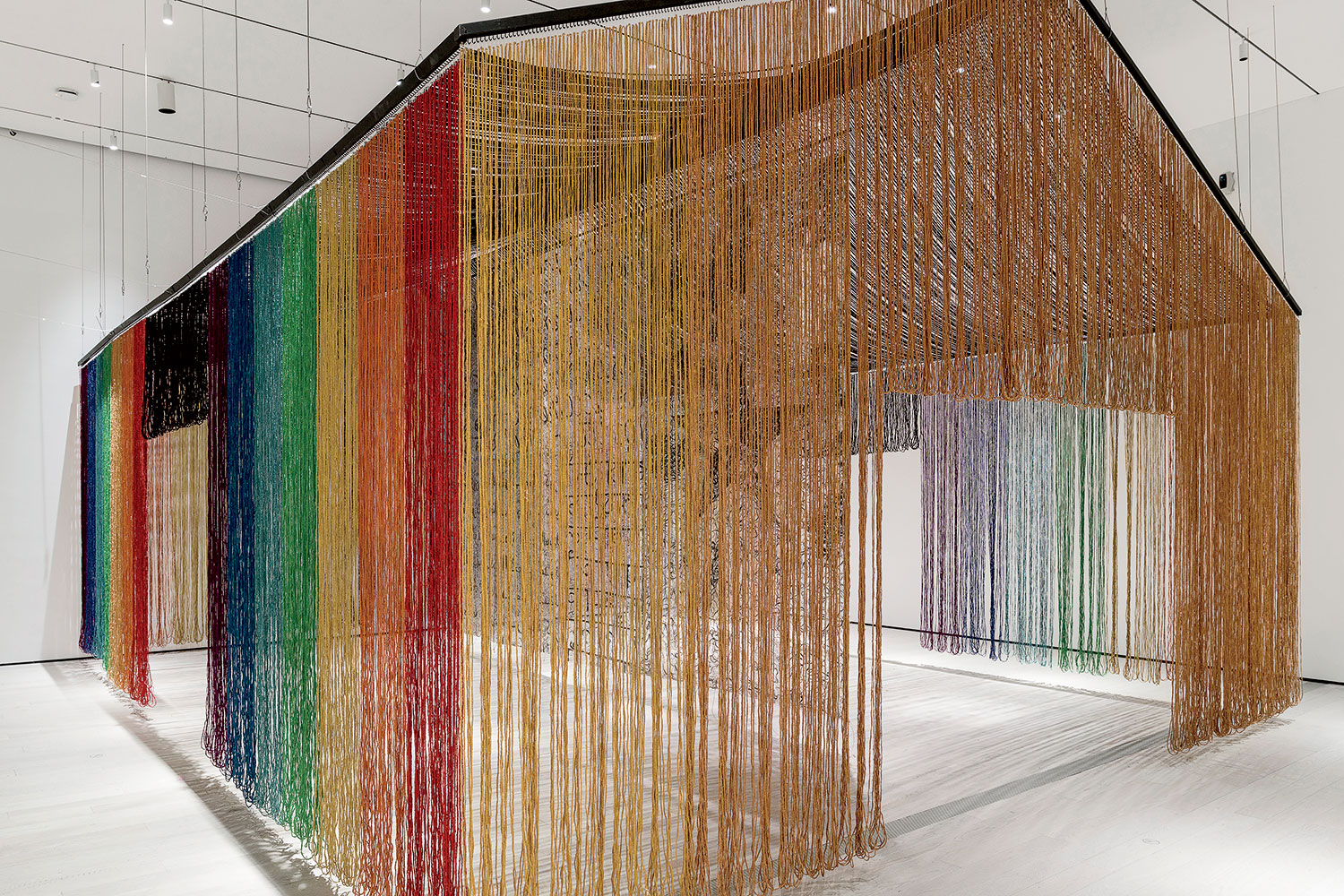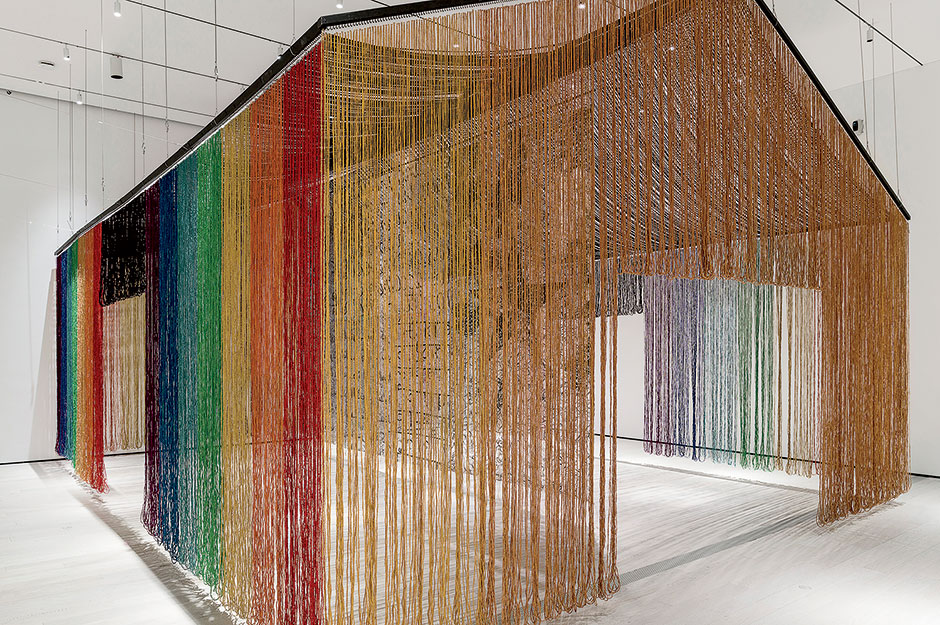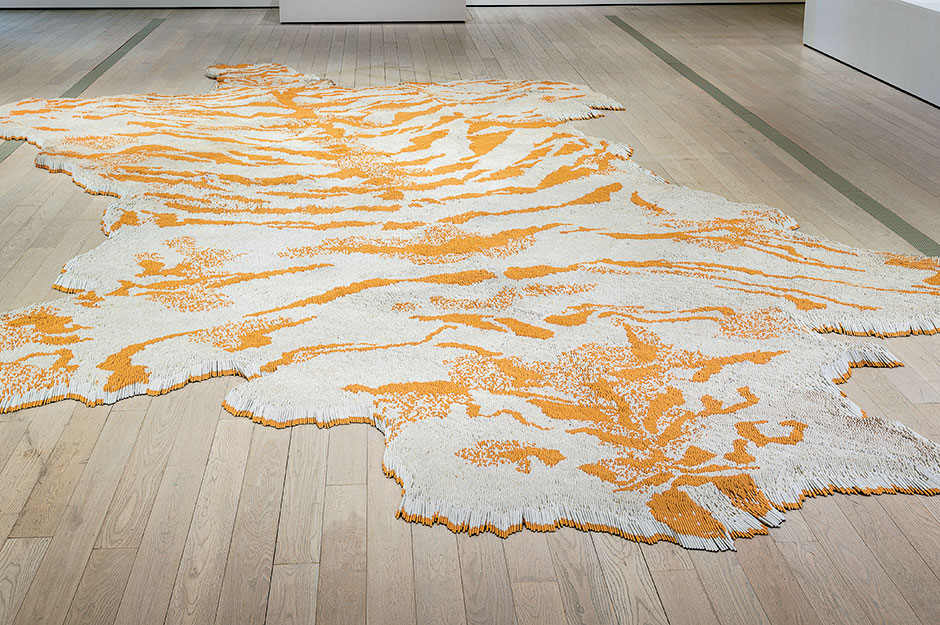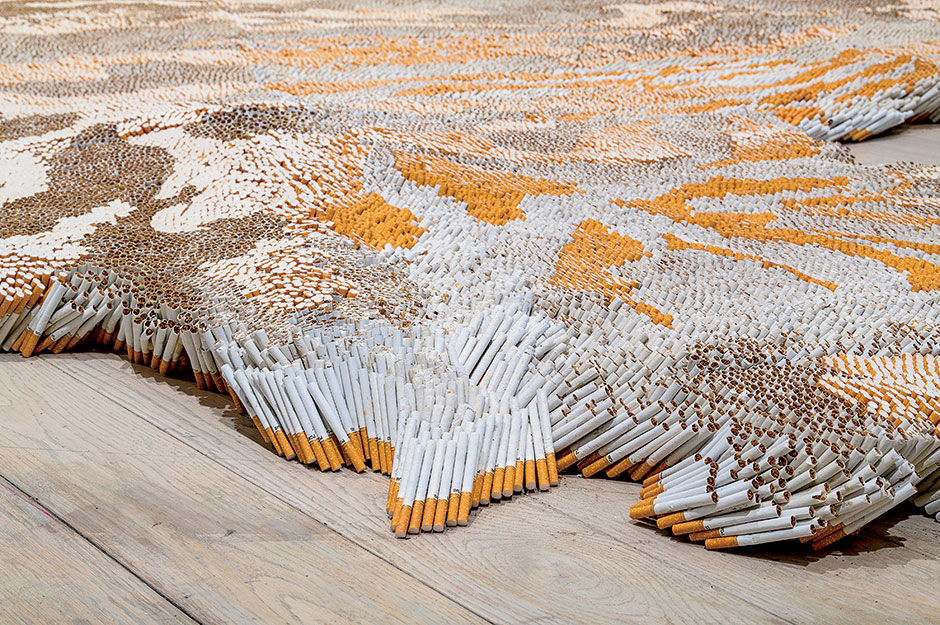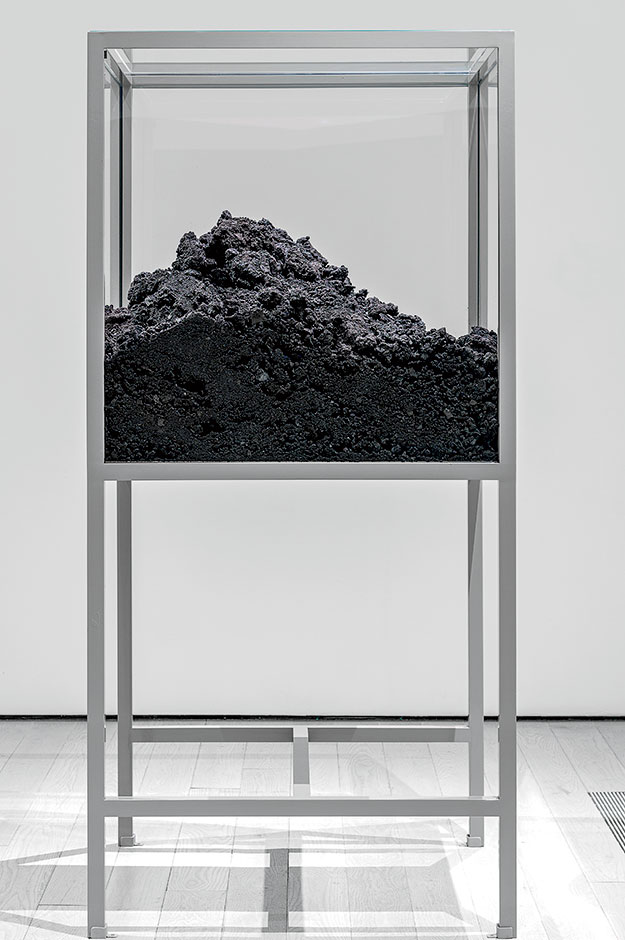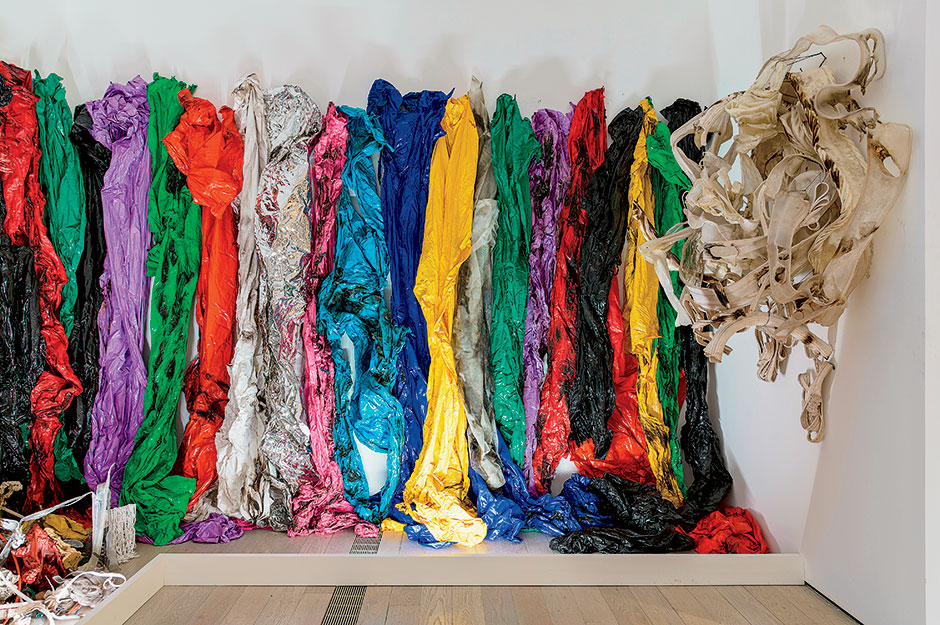While installing The Allure of Matter, a new exhibit of contemporary Chinese art, handlers at the University of Chicago’s Smart Museum of Art have to contend with some unusual objects. Among other things: 500,000 cigarettes, 8,000 black porcelain flames, and braided strands of hair that would stretch nearly 19,000 miles if laid end to end.
The scale is so large, in fact, that the museum couldn’t physically accommodate all the works. “We decided that the only way to do this in Chicago would be to find a local partner,” says cocurator Orianna Cacchione. Half the exhibit will be on display at the Lincoln Park gallery Wrightwood 659.
Featuring 45 works by 25 Chinese artists drawn to unconventional media, the show introduces the concept of “material art,” a term coined by lead curator Wu Hung, a U. of C. professor who researched the genre for six years. The term, says Cacchione, “signals artists who use materials in a way that it becomes an integral part of the artwork’s larger message, whether that’s international trade or cultural heritage.” Case in point: He Xiangyu’s glass box filled with a small portion of the 127 tons of Coca-Cola resin that he burned — a meditation on overconsumption and Western influence.
The Allure of Matter isn’t just ambitious in size; it also features some of the biggest names to emerge from China’s art scene since the 1980s. Those 500,000 cigarettes placed by hand to resemble a 36-foot-long tiger-skin rug? It’s part of the internationally acclaimed artist Xu Bing’s Tobacco Project, which considers the expansion of the American tobacco industry in China. Also on view are works by performance artist and sculptor Zhang Huan and the gunpowder “painter” Cai Guo-Qiang, who staged a fireworks performance on the U. of C.’s campus in 2017 to replicate a monumental mushroom cloud.
China’s most famous contemporary artist of all, Ai Weiwei, has a piece on display too. For his Tables at Right Angles, which will be at the Smart, a pair of Qing dynasty tables were fastened together using traditional woodworking techniques. “Since the early 1990s — a period when the Chinese antique trade was notorious for making lots of fake objects — Ai has deliberately broken, reconfigured, and transformed traditional Chinese antiquities to question their value,” Cacchione says. “The work also subtly references the Cultural Revolution, when antiques were derided by Maoist policies and destroyed by the Red Guards.”
Gina Pollara, the chief operating officer at Wrightwood 659, says the exhibition complements that concrete and brick gallery, which was designed by the Pritzker Prize–winning Japanese architect Tadao Ando. “Ando’s work is also about materiality,” she says. “It is incredibly difficult to achieve the finish and look of his concrete. The spirit of the show and the spirit of Ando’s building are in sync.”
Thanks to Wrightwood 659’s involvement, the Chicago presentation is the largest on the exhibition’s national tour. (It debuted at the Los Angeles County Museum of Art last summer and will travel to the Seattle Art Museum and the Peabody Essex Museum in Salem, Massachusetts.)
For Wu and Cacchione, The Allure of Matter is an opportunity to increase the public’s understanding of contemporary Chinese art and its international relevance. “Too often, monolithic survey exhibitions of Chinese art fall into stereotypical representations instead of finding common ground between the artists,” Cacchione says. “These material explorations provide another way of defining what contemporary art is in China, but connected to global trends. They give viewers something to grab on to.”
Details:The Allure of Matter: Material Art From China Feb. 7–May 3. Smart Museum of Art, University of Chicago, Hyde Park, free. Wrightwood 659, Lincoln Park, Free–$16. smartmuseum.uchicago.edu




